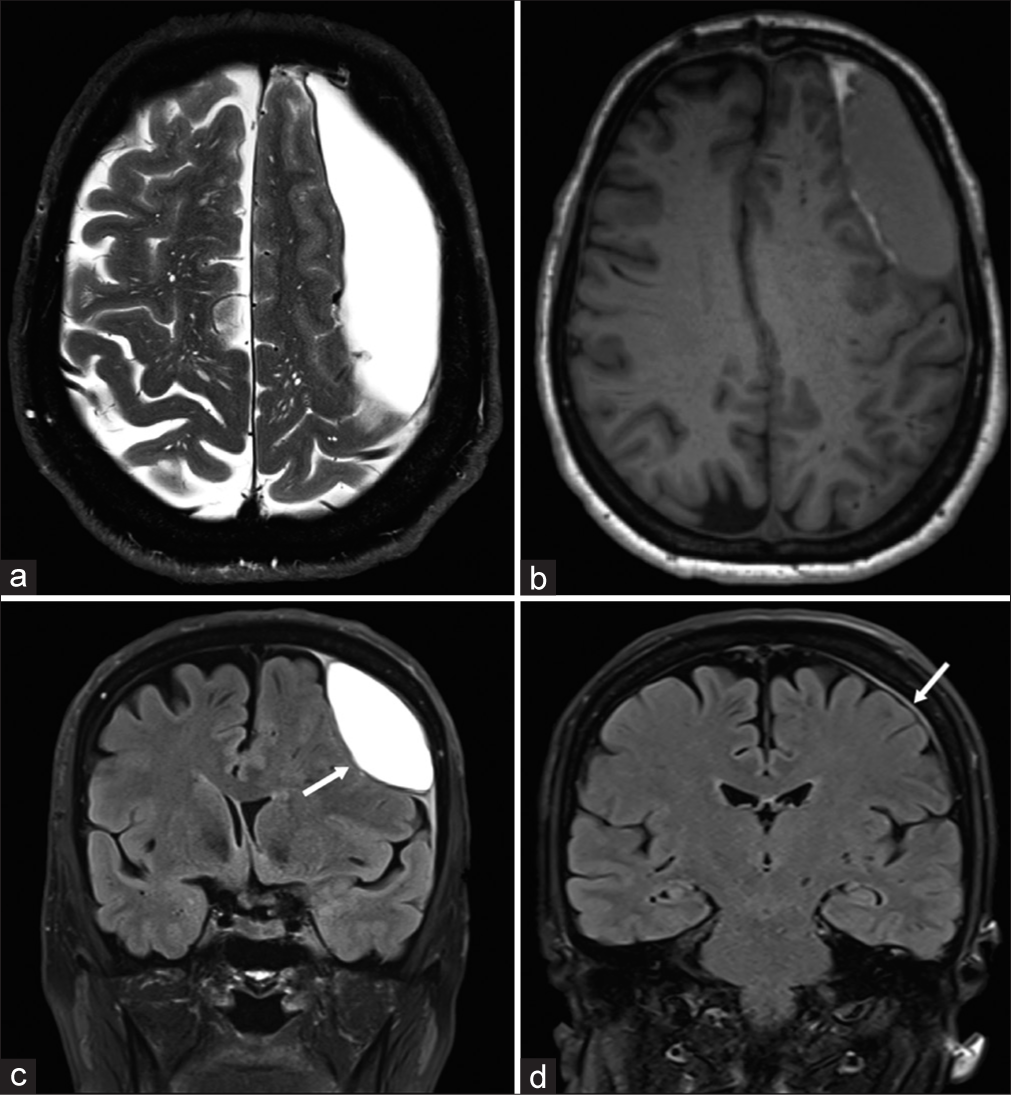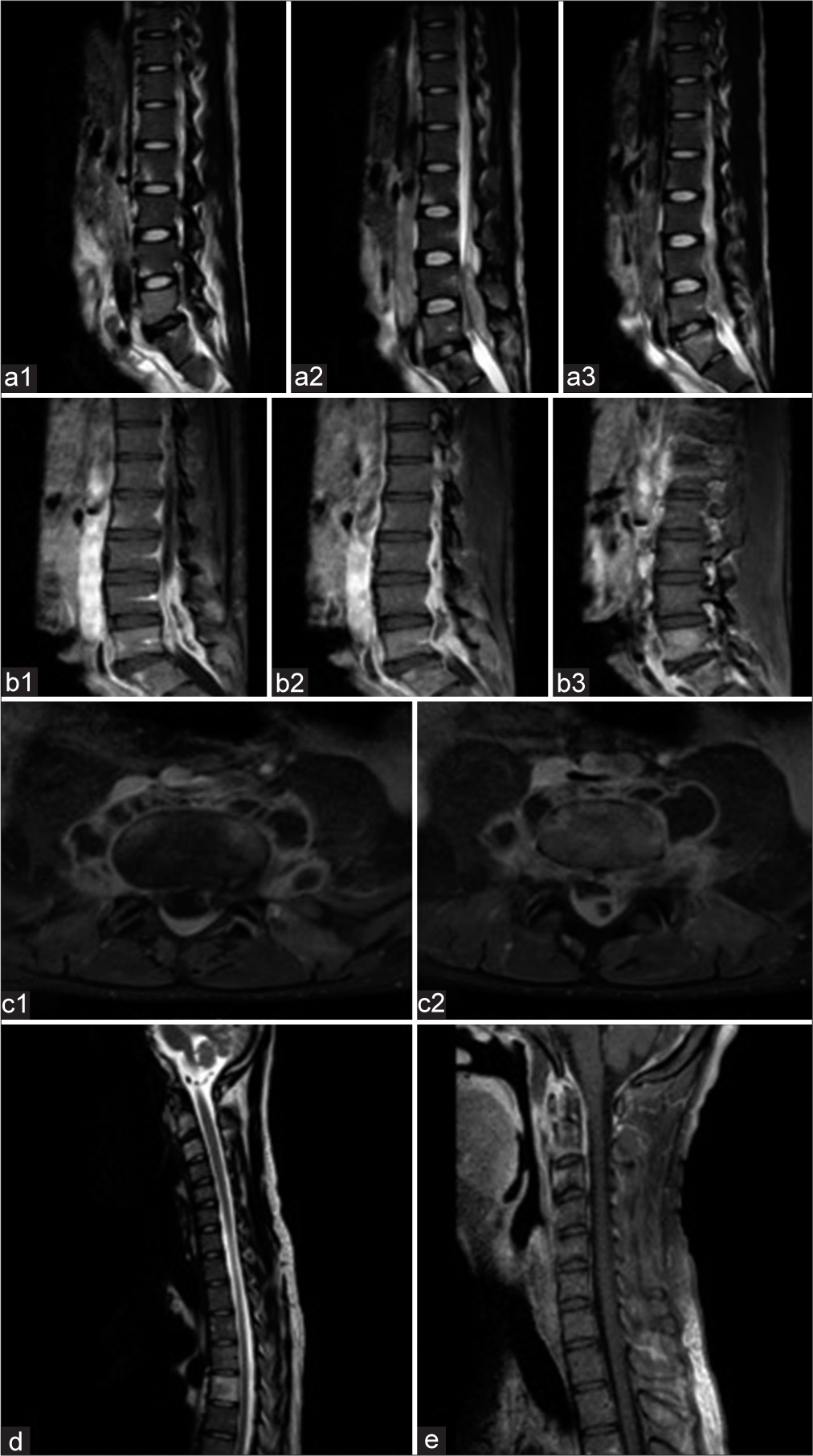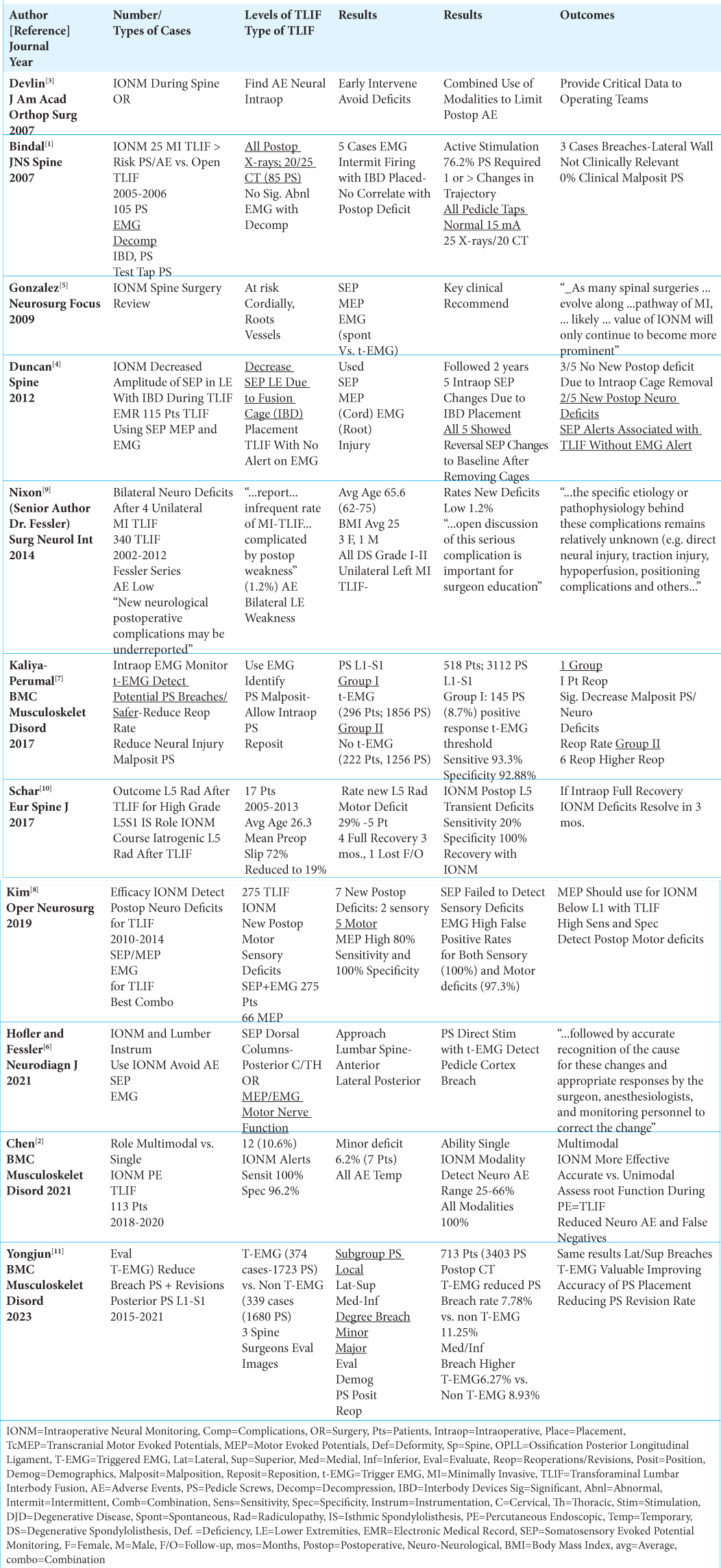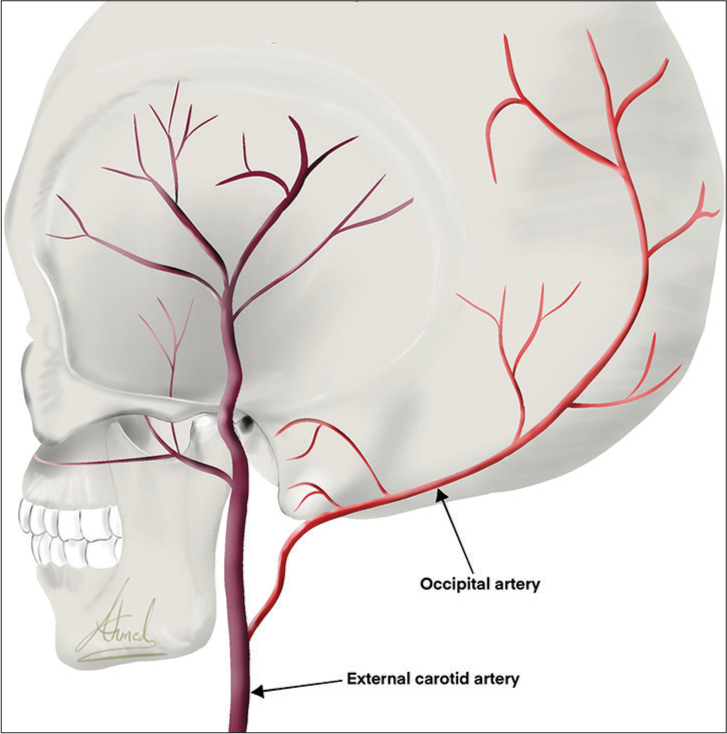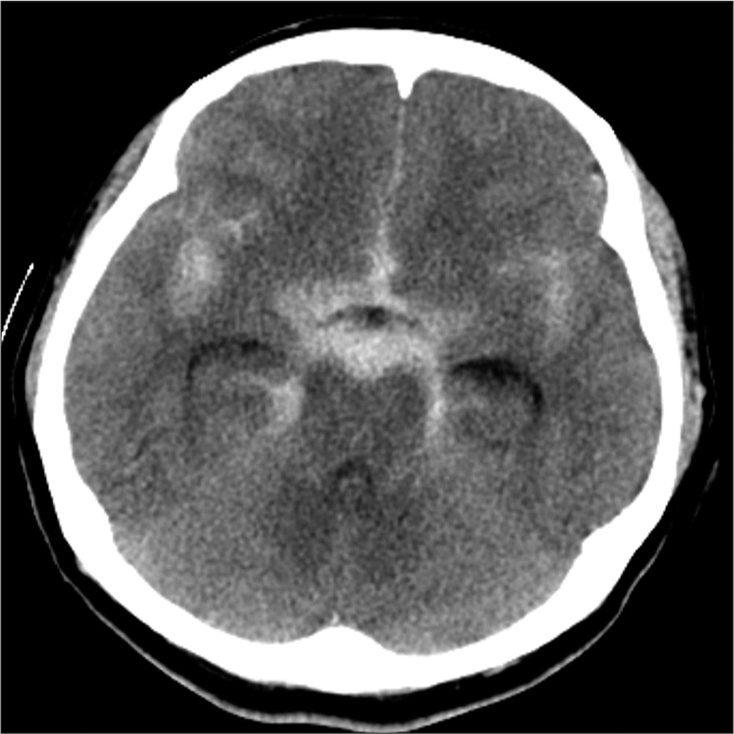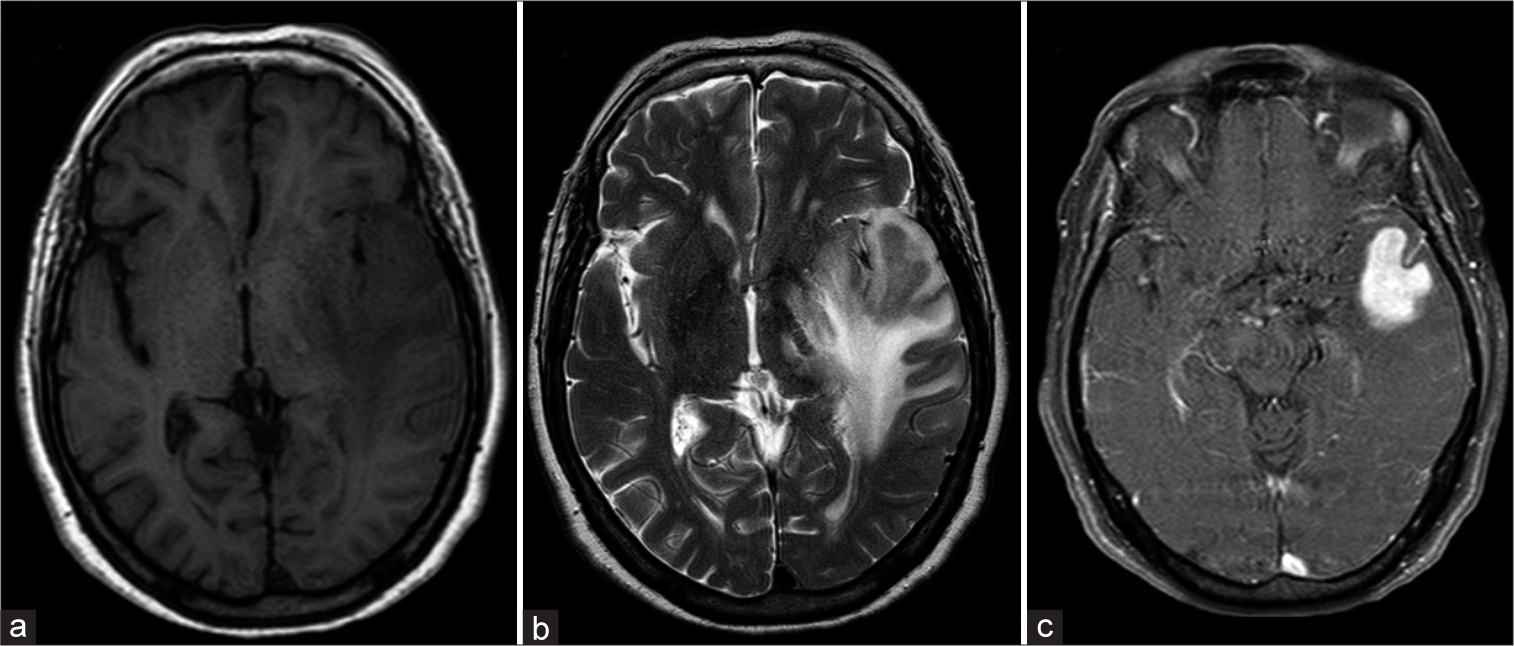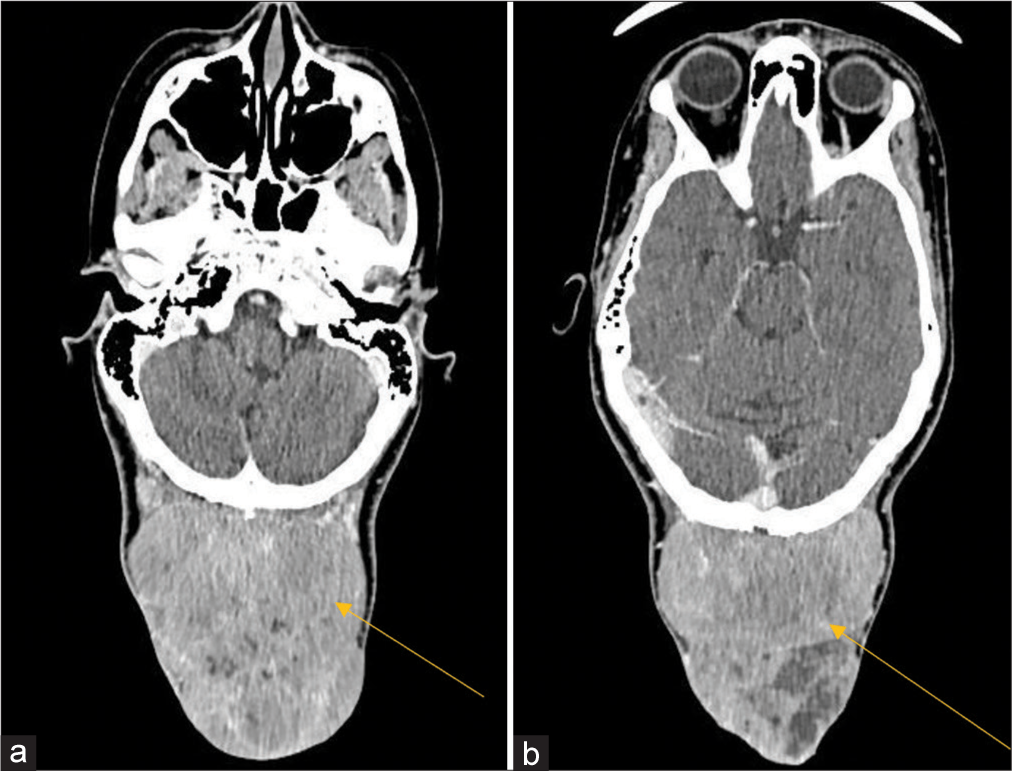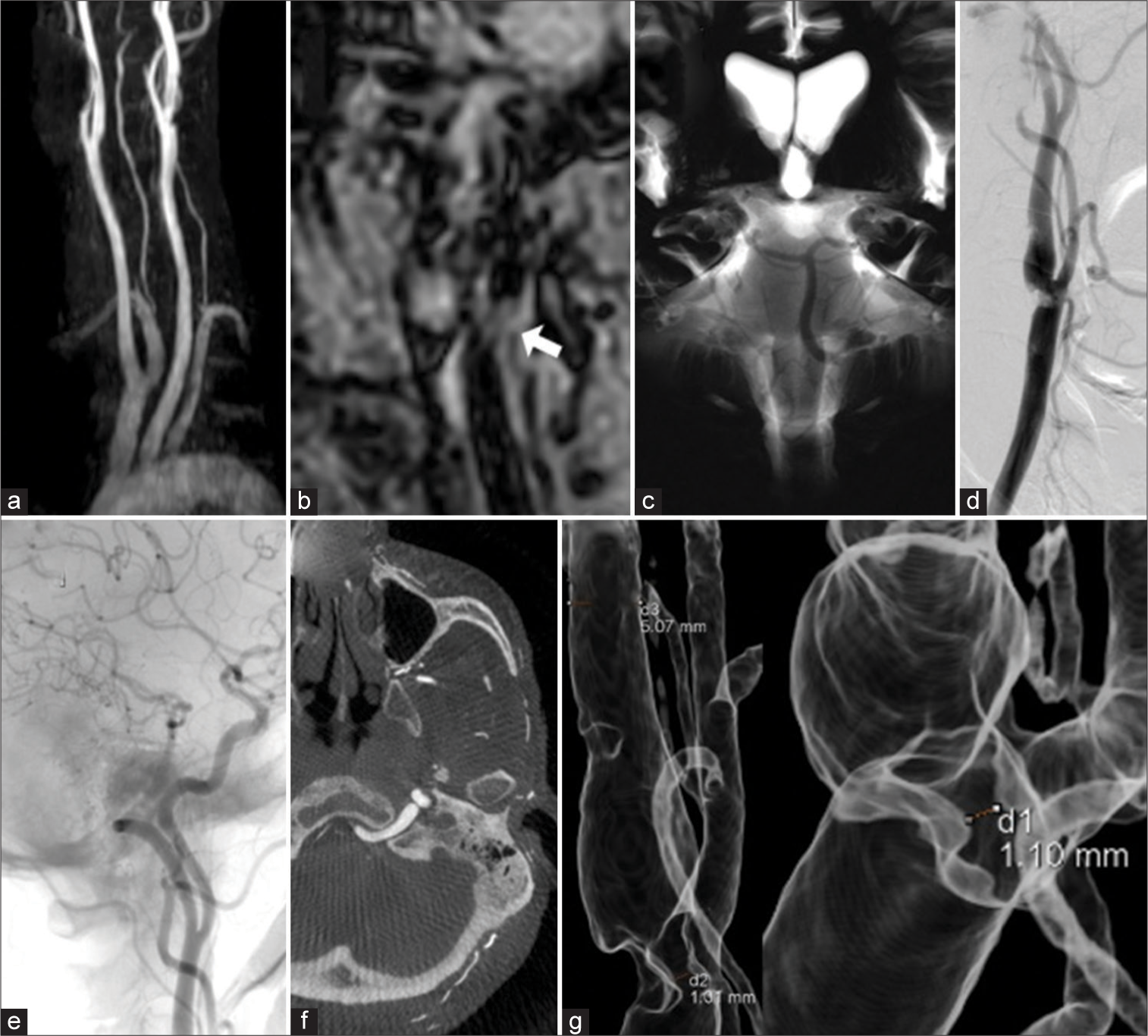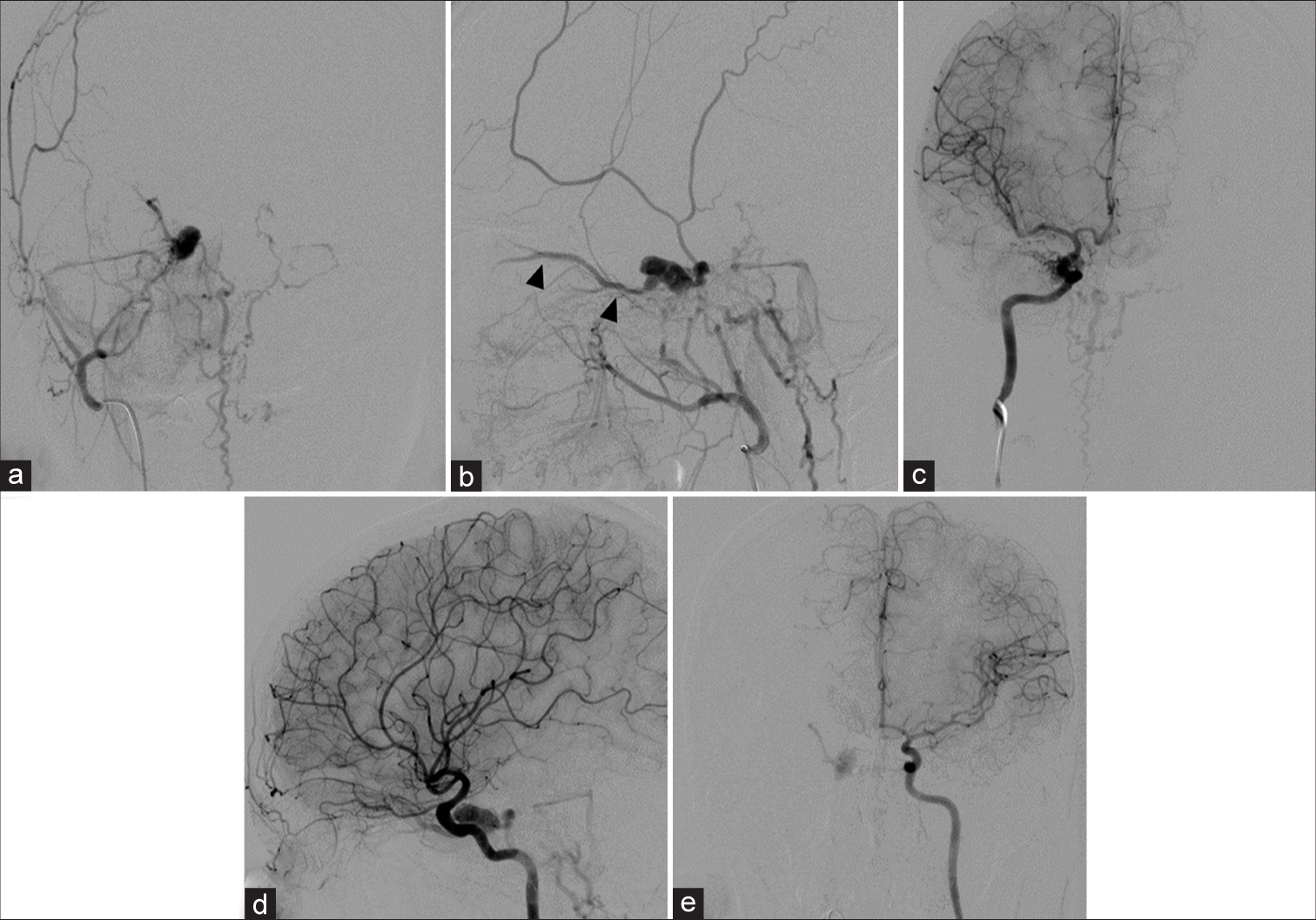The interdural hematoma: A subtype of convexity subdural/dural hematoma with specific radioanatomical characteristics
Date of publication: 08-Sep-2023
Background: Rare cases of biconvex hematomas splitting the convexity dura mater were reported and denominated interdural hematoma (IDH). Due to their rarity, little is known about their radiological characteristics, and in most cases, their invasive management with craniotomy and dural membrane excision is unnecessary.
Mixed pyogenic and tuberculous spinal epidural abscesses perforating the dura and extending into the subdural space: A case report and review of the literature
Date of publication: 08-Sep-2023
Background: Spinal infections are associated with a wide variety of clinical conditions, including osteomyelitis, spondylitis, diskitis, septic facet joints, and abscesses. Based on its anatomical relationship with the dura mater, the abscess can be epidural (extradural) or subdural (intrathecal). Subdural intramedullary abscesses of the lumbar spinal canal are more common than subdural extramedullary abscesses. Here, we present a rare case of a patient with a mixed pyogenic and tuberculous epidural abscess in the lumbar spine, which perforated the dura and extended to the subdural space.
Perspective: Can intraoperative neurophysiological monitoring (IONM) limit errors associated with lumbar pedicle screw fusions/transforaminal lumbar interbody fusions (TLIF)?
Date of publication: 08-Sep-2023
Background: We evaluated whether intraoperative neural monitoring (IONM), including somatosensory evoked potential monitoring (SEP), motor evoked potential monitoring (MEP), and electrophysiological monitoring (EMG), could reduce operative errors attributed to lumbar instrumented fusions, including minimally invasive (MI) transforaminal lumbar interbody fusion (TLIF)/open TLIF.
Occipital artery: Anatomical variations and neurosurgical applications
Date of publication: 01-Sep-2023
Background: The occipital artery (OA) is a branch of the external carotid artery. It gives rise to several cutaneous, muscular, and meningeal branches to supply different anatomical areas. The implication of OA in the neurosurgical field is well-established in the literature. Our aim in this study is to draw a complete picture of the anatomical variations and neurosurgical applications of the OA.
Intraoperative nerve stimulation during vagal nerve stimulator placement
Date of publication: 01-Sep-2023
Background: Vagal nerve stimulation (VNS) is a palliative treatment for refractory epilepsy and intraoperative nerve stimulation is applied to the vagal and other nerves to prevent electrode misplacement. We evaluated these thresholds to establish intraoperative monitoring procedures for VNS surgery.
Ruptured small cerebral aneurysm occurring at the fenestration of the A1 portion of the anterior cerebral artery, combined with accessory middle cerebral artery branching from the crus: A case report
Date of publication: 01-Sep-2023
Background: Cerebral aneurysms arising from fenestration of the A1 portion of the anterior cerebral artery (ACA) (A1 fenestration) with the accessory middle cerebral artery (MCA) is rare. Herein, we report a ruptured cerebral aneurysm arising from A1 fenestration combined with the accessory MCA that was successfully treated with coil embolization.
Primary central nervous system lymphoma in elderly: An illustrative case of the new role of surgery and integrative medical management
Date of publication: 01-Sep-2023
Background: Primary central nervous system lymphoma (PCNSL) is a rare, aggressive non-Hodgkin lymphoproliferative neoplasm. Surgery is traditionally limited to biopsy due to past studies, but recent strong evidence continues to challenge this status quo in selected patients. Here, the authors characterize a case to illustrate the potential role of surgery and foster research on integrative medical management approaches for this disease.
Primary Ewing’s sarcoma of the occipital bone: A case report and review of the literature
Date of publication: 01-Sep-2023
Background: Primary Ewing’s sarcoma (ES) arising from cranial bones is an extremely rare entity that accounts for only 1–4% of all ES cases.
Strategy of cerebral endovascular treatment for cervical internal carotid artery stenosis with a persistent primitive hypoglossal artery
Date of publication: 01-Sep-2023
Background: Persistent primitive hypoglossal artery (PPHA) is a rare residual arterial anastomosis. We placed a CASPER stent using Spider FX as an embolic protection device (EPD) in a patient with internal carotid artery (ICA) stenosis and PPHA. There are no reports of carotid artery stenting (CAS) using a CASPER stent for ICA stenosis with PPHA. We report the EPD strategy used in this case and the usefulness and precautions of CASPER stent insertion for cervical ICA stenosis in association with PPHA.
Spontaneous complete regression of malignant cavernous sinus dural arteriovenous fistula following partial transarterial embolization with liquid embolic material: Report of two cases
Date of publication: 01-Sep-2023
Background: Spontaneous complete regression of malignant cavernous sinus dural arteriovenous fistulas (CSDAVFs) following partial transarterial embolization is an extremely uncommon phenomenon. The mechanism responsible for this condition remains unclear.


